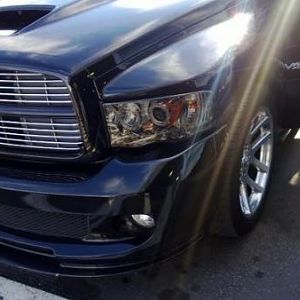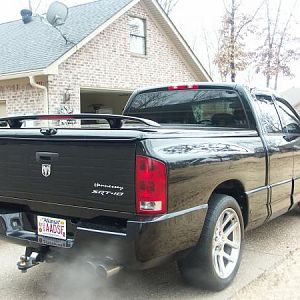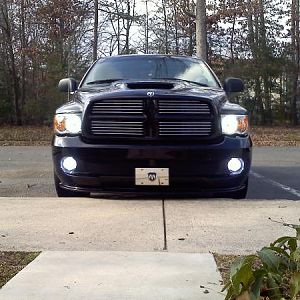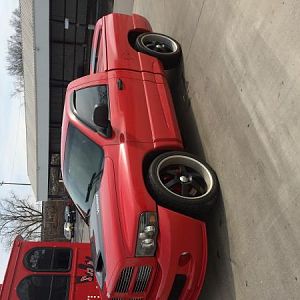mosrt10 said:
Can anyone explain the difference between a dynojet and a mustang. I have been having my trucked tuned by PBJ for years and he rocks:rock: . I was out today and a local shop had a dyno day. It was cheap for 2 pulls so I stopped by.

Let me tell you was I comfused. my hp/tq readings were a 100 less

. Now I know dynos are just a reference and all,however what the F#$k why were the readings so far off. The guy running the dyno told me dynojets measure crank hp so at this point I figured he was ill informed. So I come to you all to help me understand.
thanks
The Dynojet and Mustang dynos in our area are 10%-15% apart (Dynojets are higher). The Dynojet spins up a drum of a known weight and the Mustangs load the drums and calculate torque from there.
In the end, dynos are a tool for tuning FIRST and for bragging rights second...I was able to use the same Dyno and operator through all stages of modding so regardless of the final numbers, I knew if what I was doing was working or not.
My own truck made 387 HP stock (corrected) and I was surprised it was that low (on a Dynojet). Prior to the Gen IV Viper cars, they were all pretty close to 425 wheel (corrected) which shows how much an auto trans can rob you of rear wheel horsepower, compared to 387.
I don't know how any chassis dyno could measure crank horsepower as there are engine dynos and there are chassis dynos. Maybe the guy telling you that was "confused". An engine dyno measures "flywheel" power and a chassis dyno, rear wheel power. In my case, the advertised 500 HP (flywheel, stock) minus 387 on the wheel dyno = 113 horsepower lost through the drivetrain.
Also, the numbers given are normally corrected for sea level which can also confuse the issue if you compare numbers that aren't corrected.
With either dyno, the numbers can be manipulated but it defeats the purpose if you are looking at true before and after mod results.
Kind of like K&N or Volant making claims of substantial horsepower increases with their cold air kits....and real world, they
don't produce what they claim...
Ronnie
 Let me tell you was I comfused. my hp/tq readings were a 100 less
Let me tell you was I comfused. my hp/tq readings were a 100 less . Now I know dynos are just a reference and all,however what the F#$k why were the readings so far off. The guy running the dyno told me dynojets measure crank hp so at this point I figured he was ill informed. So I come to you all to help me understand.
. Now I know dynos are just a reference and all,however what the F#$k why were the readings so far off. The guy running the dyno told me dynojets measure crank hp so at this point I figured he was ill informed. So I come to you all to help me understand.




